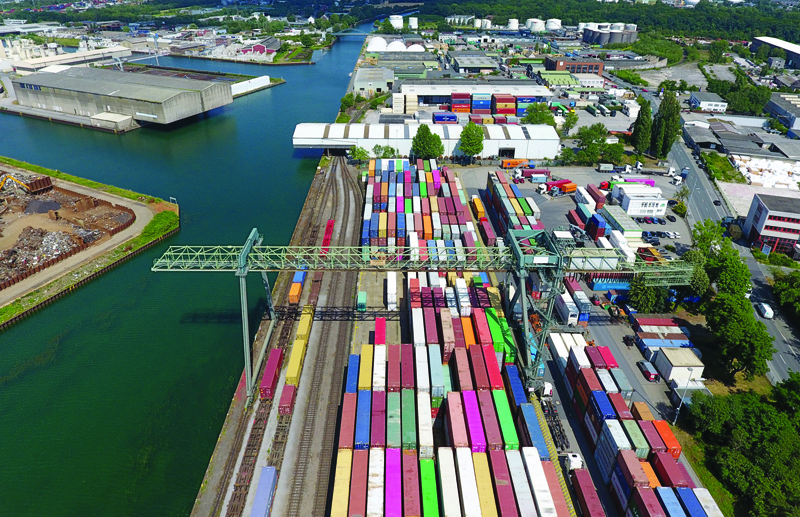FRANKFURT: Global shortages in industrial components and raw materials have cramped Germany's export driven economy, prompting the country's leading economic institutes to slash their forecast for growth this year yesterday. In their biannual forecast, the research groups revised down the estimate for 2021 to 2.4 percent, from their earlier prediction of 3.7 percent made in April. "The corona(virus) pandemic still shapes the economic situation in Germany," the institutes (DIW, Ifo, IfW, IWH and RWI) said in a joint statement, preventing a return to normal economic activity.
After rapid growth in spring, the German economy had been held back by supply bottlenecks "hampering manufacturing" and meant that "only the consumer-related service industries are growing", the institutes said. Together the institutes expect pandemic effects and shortages to be "gradually overcome" in 2022, raising their forecast for growth in the year to 4.8 percent from 3.9 percent. Earlier this week, the International Monetary Fund downgraded its own global economic forecasts, including Germany's outlook, pointing the finger at supply chain disruptions.
'Difficult autumn'
Businesses have to prepare for a "difficult autumn", Joachim Lang, the head of Germany's influential industrial lobby, the BDI, said last week in response to sinking export figures. Ralph Wiechers, chief economist at the mechanical engineering industry group VDMA, told AFP that businesses were being confronted with shortages across the board, "whether it's wood for pallets, packing materials, steel-an important input for our industry-or computer chips, semiconductors".
Orders from customers have also begun to drop among the companies Wiechers represents due to an inability to lay their hands on materials. "They are not getting the plastic supplies, so why should they buy a plastic processing machine?" he said. The deterioration of the economic situation has seen a series of Germany's closely watched indicators turn red. Last week, the federal statistics agency Destatis reported that industrial production went into reverse in August, falling by four percent month-on-month, while incoming orders slumped 7.7 percent after a record July.
Shortages were having knock-on effects on companies' production and revenues, Wiechers said, with mechanical engineering among the sectors most heavily affected. Only Germany's key automotive sector was suffering more acutely from scarcity-a situation driven largely by the short supply of semiconductors, a component in both conventional and electric vehicles. Production lines in Germany at Volkswagen, Opel and Ford have been at a standstill as bottlenecks tighten, while BMW and Mercedes-Benz have been delivering vehicles with missing components, according to the German weekly WirtschaftsWoche.
New year, new government
Germany's exposure to international supply issues and dependence on exports mean Europe's economic powerhouse will touch its pre-pandemic level "later than most other countries", said Carsten Brzeski, head of macro research at ING. Supply chain issues had "blown out" the strong growth ignited by the German government's recovery program, Brzeski said. The course of any further stimulus is likely to be determined by the outcome of ongoing coalition talks, with the center-left Social Democrats poised to lead the next German government following last month's elections.
The German government's spending is constrained by a constitutional "debt brake" that limits deficits to 0.35 percent of GDP in normal times, but was temporarily put to one side to respond to the coronavirus pandemic. Such a debt brake was important but the current parameters were "overly restrictive", meaning governments had to "set priorities" on spending, Oliver Holtemoeller, deputy president of the IWH, said at a press conference yesterday. Scarcities have also contributed to inflationary pressures that have seen prices in Germany rise at their fastest pace since 1993, up 4.1 percent year on year.
Besides shortages, the surge was driven by one-off tax effects related to the pandemic, as well as sharp rises in energy prices-a Europe-wide phenomenon-which rose by 14.3 percent, according to Destatis. The rise in consumer prices would average out at three percent in 2021, the economic institutes estimated, while the rate of increase would slow in 2022 to 2.5 percent. - AFP



